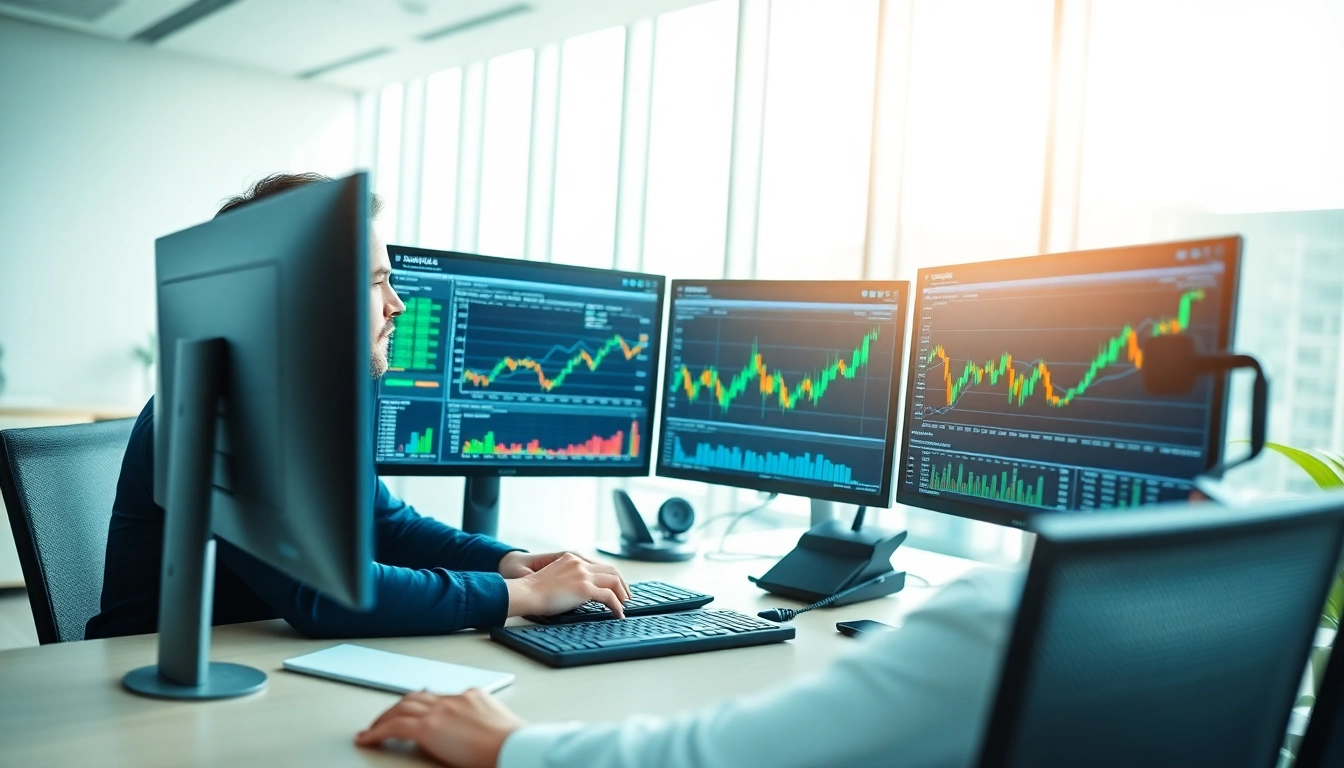Introduction to Trade Futures
The world of finance is replete with opportunities and uncertainties, and one of the most intriguing areas within this domain is the trading of futures. Futures allow traders to speculate on the price movements of various assets, such as commodities, currencies, and financial indices, at a future date. This practice not only provides investors the potential for high returns but also comes with its unique set of risks. Understanding how to trade futures is essential for anyone looking to navigate this complex yet rewarding market.
What Are Futures Contracts?
A futures contract is a standardized legal agreement between two parties to buy or sell a specific asset at a predetermined price at a future date. These contracts are primarily traded on exchanges, and they include details such as the asset type, quantity, and expiration date. Futures are categorized as derivatives since their value is derived from the underlying asset, which can range from oil to agricultural products to stock indices.
Benefits of Trading Futures
Trading futures offers numerous advantages, making it an attractive option for both novice and experienced traders. Here are some key benefits:
- Leverage: Futures trading often requires only a fraction of the total contract value as margin, allowing traders to control larger positions than their initial capital.
- Diversification: Investors can diversify their portfolios by trading different asset classes, thus spreading risk.
- 24-Hour Market: Many futures markets operate nearly around the clock, offering continuous trading opportunities across time zones.
- Hedging Opportunities: Futures contracts are commonly used by businesses and investors to hedge against price fluctuations in commodities or other assets.
Common Misconceptions About Futures Trading
Despite its benefits, futures trading is often misunderstood. Here are some common misconceptions:
- Only for Professionals: Many believe that futures trading is only suited for seasoned traders, but with adequate education and strategy, beginners can also participate.
- High Risk Equals Guaranteed Loss: While trading futures can be risky, with sound strategies and risk management, traders can mitigate losses and possibly achieve gains.
- Only for Commodities: Although many associate futures with commodities, futures contracts are available for various financial instruments, including indices and currencies.
Understanding the Mechanics of Trade Futures
How Futures Markets Operate
The functioning of futures markets can be traced to four key processes: entering into a contract, trading at the exchange, margining, and settlement.
Contracts are first created when a buyer and a seller agree to the terms. When traders buy or sell these contracts on an exchange, they are taking positions based on anticipated future price movements. Margin accounts are mandatory to ensure that parties can cover potential losses. Finally, contracts can be settled either through physical delivery of the asset or cash settlement, where the difference between the contract price and the market price is exchanged.
Key Terminology in Futures Trading
To operate effectively within futures markets, understanding specific terminology is critical. Here are some essential terms:
- Margin: The securities or cash deposited by a trader to cover potential losses in a position.
- Contract Size: The standardized quantity of the underlying asset that a futures contract specifies.
- Expiration Date: The date on which a futures contract matures, after which it can no longer be traded.
- Open Interest: The total number of outstanding futures contracts that have not yet been settled.
Types of Futures Contracts Explained
Futures contracts can be broadly categorized into three types:
- Commodity Futures: Contracts based on physical goods such as oil, gold, grains, and livestock.
- Financial Futures: Contracts based on financial instruments, including stock indices, interest rates, and currencies.
- Index Futures: Futures contracts that speculate on the value of market indices such as the S&P 500 or the Dow Jones Industrial Average.
Essential Strategies for Successful Futures Trading
Developing a Trading Plan
A successful trading journey begins with a well-thought-out trading plan. This plan should include:
- Goals: Define your financial goals, whether they are day trading for quick profits or long-term investments.
- Market Analysis: Utilize a mix of fundamental and technical analysis to guide trading decisions.
- Entry and Exit Strategies: Establish criteria for when to enter or exit trades based on market conditions and personal objectives.
- Risk Management: Set stop-loss orders to protect capital and determine position sizes based on your overall risk tolerance.
Technical Analysis for Futures Markets
Technical analysis is a critical component of successful futures trading. This analysis involves examining historical price data to forecast future price movements. Key techniques include:
- Chart Patterns: Use patterns such as head and shoulders, triangles, and flags to identify potential trend reversals or continuations.
- Indicators: Employ indicators like moving averages, Relative Strength Index (RSI), and Bollinger Bands to gain insights on market momentum and volatility.
- Volume Analysis: Assess trading volume to confirm price trends or signal potential reversals.
Risk Management Techniques
Implementing effective risk management techniques can significantly enhance the likelihood of trading success. Consider these strategies:
- Diversification: Spread your capital across various futures contracts to minimize exposure to any single market.
- Position Sizing: Use a predetermined percentage of your trading capital for each trade to avoid substantial losses.
- Stop-Loss and Take-Profit Orders: Automate your trading plan by setting orders to close positions at pre-defined profit or loss levels.
Tools and Platforms for Trade Futures
Choosing the Right Trading Platform
To navigate the futures markets effectively, selecting a suitable trading platform is essential. Consider factors like:
- User Interface: Look for intuitive interfaces that simplify order execution and market analysis.
- Fees and Commissions: Compare various platforms’ fees to ensure they suit your trading frequency and volume.
- Educational Resources: Prefer platforms that offer tutorials, webinars, and demo accounts for beginners.
Recommended Tools for Analysis and Trading
Enhance your trading experience with essential tools:
- Charting Software: Programs like TradingView enable traders to analyze price movements and apply various technical indicators.
- Market News Services: Maintaining awareness of market news through services like Bloomberg or Reuters can inform your trading decisions.
- Simulation Programs: Trading simulators offer a risk-free environment to practice strategies and refine trading skills.
Using APIs to Enhance Trading Efficiency
For tech-savvy traders, utilizing Application Programming Interfaces (APIs) can streamline trading strategies. APIs allow integration with trading platforms to automate trading, retrieve market information in real-time, and execute trades programmatically. This capability is particularly advantageous for developing algorithmic trading strategies based on predetermined criteria.
Evaluating Performance in Futures Trading
Measuring Success: Key Performance Indicators
To evaluate the effectiveness of your trading strategies, monitor key performance indicators (KPIs), such as:
- Win Rate: The percentage of profitable trades compared to total trades made.
- Risk-Reward Ratio: Evaluate the expected reward for each dollar risked. A ratio of 2:1 or higher is often deemed favorable.
- Return on Investment (ROI): Measure the profitability of your trading strategy by comparing total returns to total investment.
Learning From Trading Results
Each trade offers a learning opportunity. After closing a position, conduct a post-trade analysis to understand what went right or wrong. Consider factors like market conditions at the time of the trade, adherence to your trading plan, and emotional responses. Documenting these findings in a trading journal can provide insights that refine future strategies.
Ongoing Education and Resources for Traders
Futures trading – like any other investment – is an ongoing learning experience. Continuous education through books, online courses, and webinars is crucial. Engaging with trading communities, following expert analysts, and staying updated on market news can further enhance your knowledge and trading acumen.



